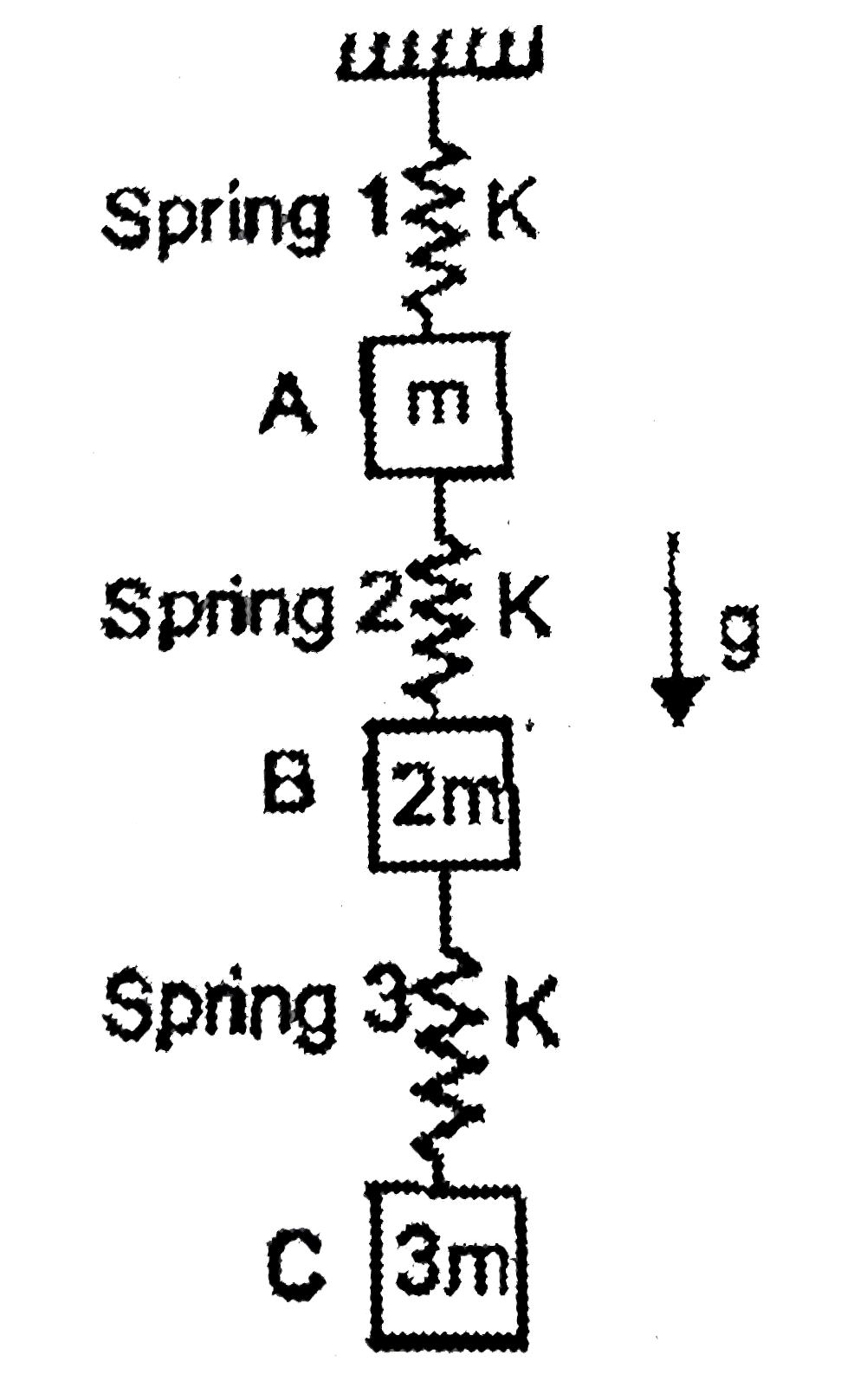A block tied between identical springs is in equilirium. If upper spring is cut, then the acceleration of the nlock just after cut is 5ms1 Now if instead of upper string lower spring is cut, then the acceleration of the block just after the cut will be (Take g=10m/s2).
1.25ms−2
5ms−2
10ms−2
2.5ms−2
The correct Answer is:B
In both cases sudden changes in force by cutting the spring would be kx.
∴a=ΔFm=kxm (in both case )
In one case it is downwards and other case it is upwards.
Similar Questions
Knowledge Check
A block tied between two identical springs is in equilibrium. If upper spring is cut then the acceleration of the block just after cut is 6m/s2 downwards. Now, if instead of upper spring, lower spring is being cut then the acceleration of the block just after the cut will be.
 A4m/s2 downwardsB6m/s2 downwardsC4m/s2 upwardsD6m/s2 upwards
A4m/s2 downwardsB6m/s2 downwardsC4m/s2 upwardsD6m/s2 upwardsA block is attached with an ideal spring and string, and is in equilibrkum as shown in Figure. The acceleration of the block just after breaking the string is a1 and just after breaking the spring is a2. Then
 Aa1=5g8Ba2−3g5Ca1=g2Da2=g
Aa1=5g8Ba2−3g5Ca1=g2Da2=gConsider a system of two massless idealsprings and a block which is in equilibrium. The acceleration of block just after cutting the right spring is (Take g=10m/s2 ):
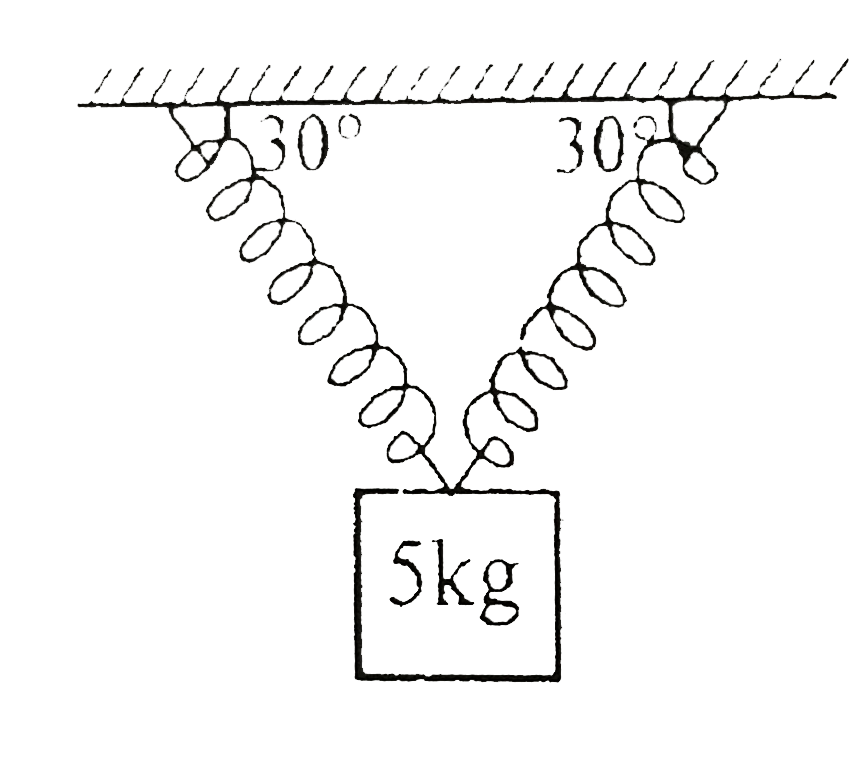 A5m/s2B10m/s2C10√2m/s2D20m/s2
A5m/s2B10m/s2C10√2m/s2D20m/s2
A block of mass 2 kg is kept at rest on a smooth inclied plane as shown in (a) with the help of a string Find the tension in the string and reaction on the block if the string is cut, find the acceleration of the block neglecting friction.
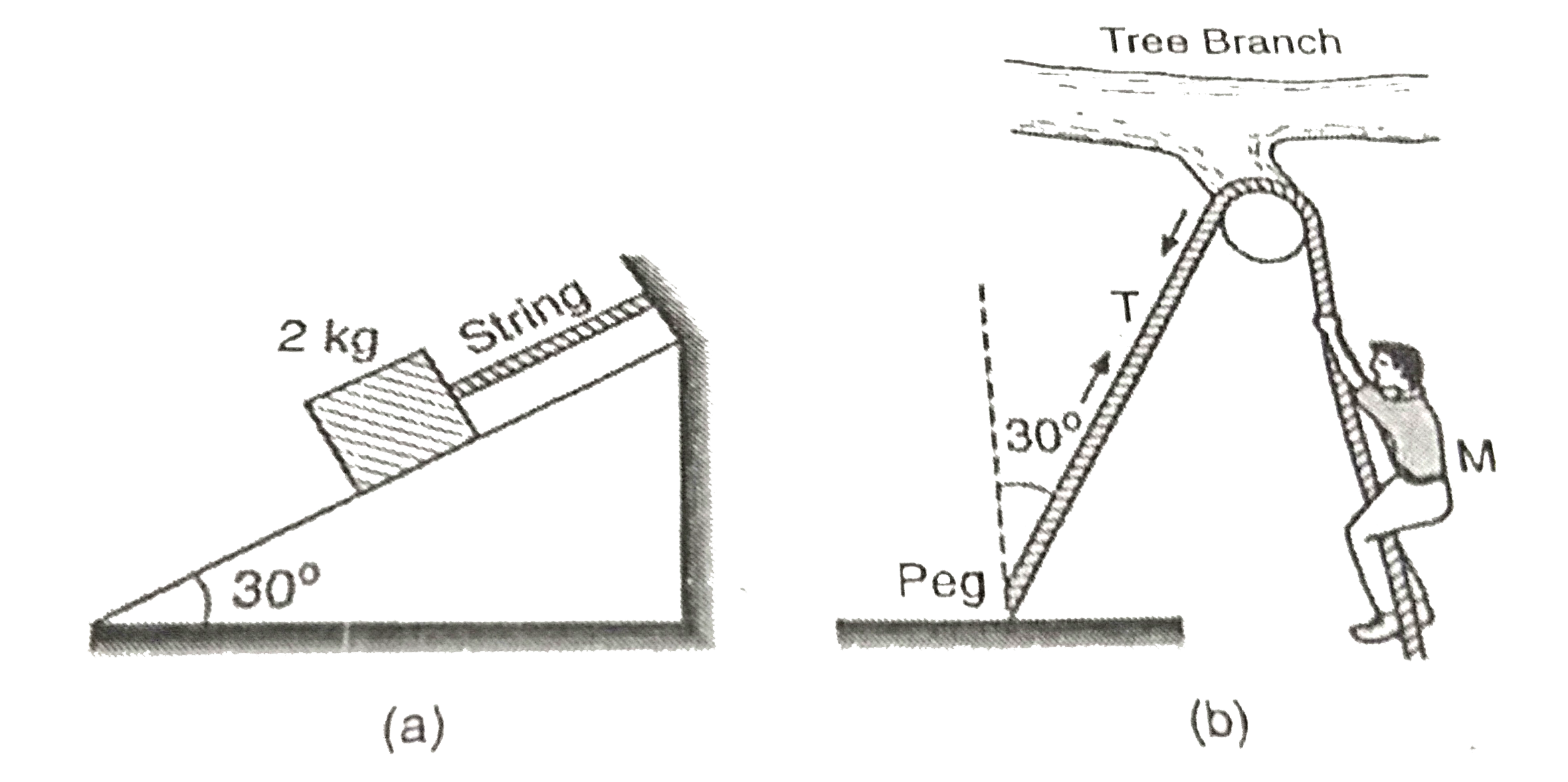
View SolutionA block of mass m is connected two springs of spring constant 2k annd k , respectively , as shown in the vertical plane. At equilibrium , both springs are compressed by same length. If suddenly lower spring is cut, then acceleration of block, just after spring cut , is
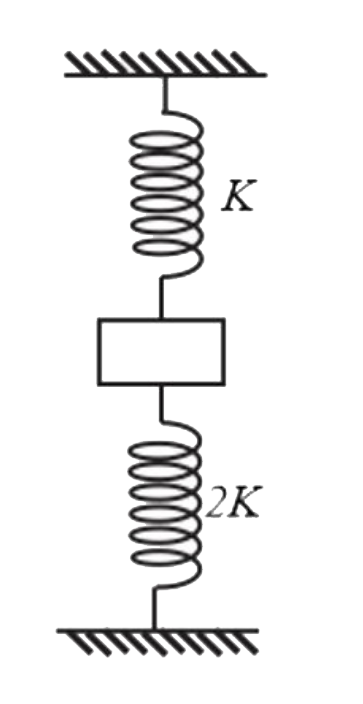
View SolutionTwo block of mass 2kg are connected by a massless ideal spring of spring constant K=10N/m . The upper block is suspended from roof by a light string A . The system shown is in equilibrium. The string A is now cut, the acceleration of upper block just after the string A is cut will be (g=10m/s2 .

View SolutionSystem shown in fig is in equilibrium and at rest. The spring and string are massless now the string is cut. The acceleration of mass 2m and m just after the string is cut will be:
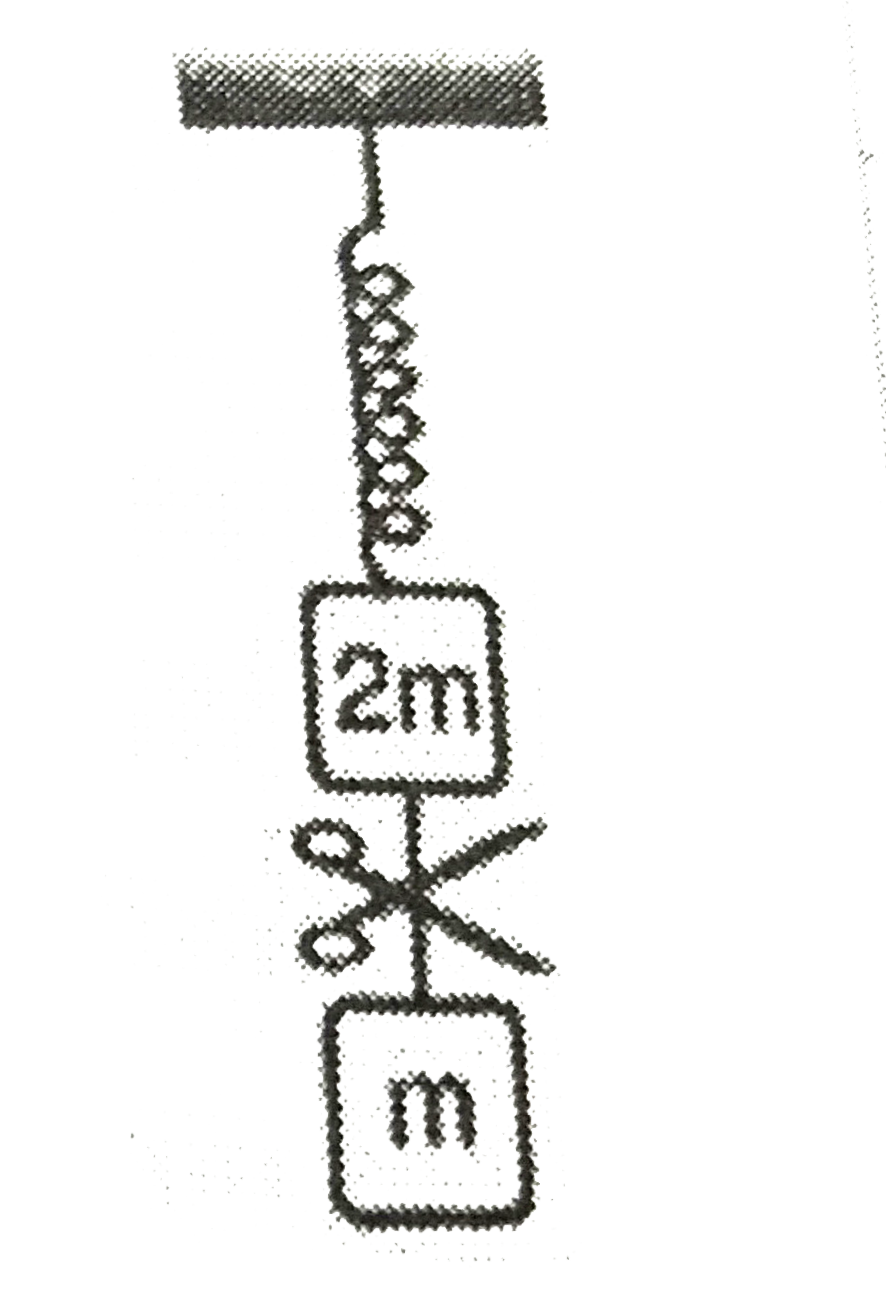
View SolutionThe system shown in figure is initially in equilibrium. What is the acceleration of B just after the string connecting B to ground is cut ?
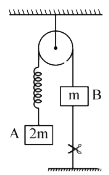
View Solution


